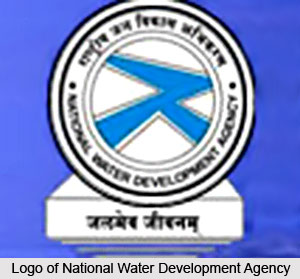 National Water Development Agency (NWDA) was set up with the intent of carrying out the balance of water resources in the country and their optimum utilization. The Agency carries out studies on a realistic basis for the best possible usage of the waters of the Peninsular rivers system. It prepares feasibility reports and thereby gives a concrete shape to the Peninsular Rivers Development Component of National Perspective. In 1990, NWDA was also entrusted with the task of Himalayan Rivers Development Component of National Perspectives. Recently, the functions of NWDA have been further modified and the work of preparation of detailed Project Reports (DPR) of various link proposals and Pre-feasibility Reports and feasibility reports of intra-State links as proposed by the States have been included in the functions of the NWDA.
National Water Development Agency (NWDA) was set up with the intent of carrying out the balance of water resources in the country and their optimum utilization. The Agency carries out studies on a realistic basis for the best possible usage of the waters of the Peninsular rivers system. It prepares feasibility reports and thereby gives a concrete shape to the Peninsular Rivers Development Component of National Perspective. In 1990, NWDA was also entrusted with the task of Himalayan Rivers Development Component of National Perspectives. Recently, the functions of NWDA have been further modified and the work of preparation of detailed Project Reports (DPR) of various link proposals and Pre-feasibility Reports and feasibility reports of intra-State links as proposed by the States have been included in the functions of the NWDA.
Formation of NWDA
Over the years it has been seen that the availability of water resources in the country is extremely uneven. This is because of the seasonal and regional distribution of rainfall. Most of the rain occurs during the summer monsoon months. The rainfall during the remaining part of the year is very insignificant. Large areas in western, central and southern parts of India receive very low rainfall while the northern and eastern regions receive very high monsoon rains. Due to this uneven distribution of rainfall, some parts of the country suffered from floods whereas some others suffered from droughts. This naturally was an extremely destructive tendency leading to an immense loss of life and property. The concepts of Garland Canal and Ganga - Cauvery Link, when enunciated, were found to be too expensive for a resource-strapped India. This further led to an alternative National Perspective Plan (NPP), prepared jointly by Ministry of Water Resources and Central Water Commission, which envisaged transfer of water from surplus areas to deficit areas after carrying out scientific studies and investigations. The National Water Development Agency (NWDA) came into existence in July, 1982, to give concrete shape to the proposals of NPP.
Administration of NWDA
The Governing Body (GB) of the NWDA Society under the Chairmanship of the Secretary (Water Resources), Government of India, manages, administers, directs and controls the affairs and funds of the Society subject to the rules, bye-laws and orders of the Society and generally pursues and carries out the activities of the Society as set forth in its Memorandum of Association and in doing so, follows and implements the policy directions and guidelines laid down by the Society.
Functions of NWDA
The primary task entrusted to NWDA comprises:-
* To promote scientific development for optimum utilisation of water resources in the country;
* To carry out detailed surveys and investigations of possible reservoir sites and inter-connecting links in order to establish feasibility of the proposals of Peninsular Rivers Development and Himalayan Rivers Development Components forming part of National Perspective for Water Resources Development prepared by the then Ministry of Irrigation (now Ministry of Water Resources) and Central Water Commission;
* To carry out detailed studies about quantum of water in various Peninsular River Systems and Himalayan River Systems which can be transferred to other basins / States after meeting reasonable needs of basin / States in the foreseeable future;
* To prepare feasibility reports of various components of the scheme relating to Peninsular Rivers Development and Himalayan Rivers Development;
* To prepare detailed project reports of river link proposals under National Perspective Plan for water resources development after concurrence of the concerned States;
* To prepare pre-feasibility / feasibility reports of the intra-state links as may be proposed by the States;
* To do all such other things the Society may consider necessary, incidental, supplementary or conducive to the attainment of above objectives.




















